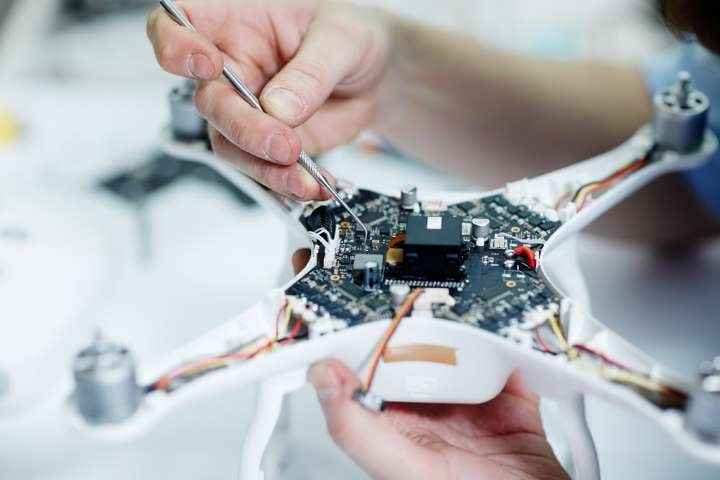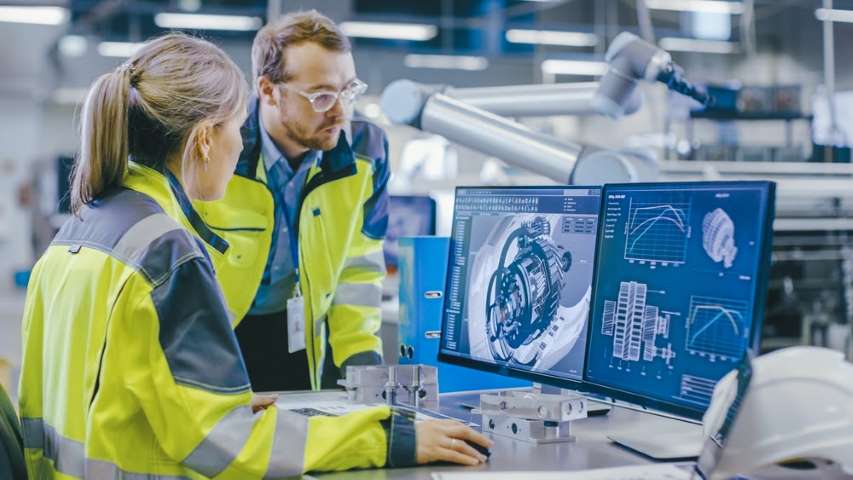Robotics, pioneered in the 1960s, combines mechanical engineering, electrical engineering, and computer science to create flexible machines able to handle precision duties far more efficiently than human workers. Thus automation and robotics engineering was born.
Today’s robots use high-tech equipment and advanced software to perform increasingly complex tasks using automation. To accomplish this, engineers have created robots with control systems in each moving component.
This smaller, decentralized architecture helps push the physical limits and maximize the value of each unit through automation. Demand for automated robots has driven the cost down by 50% in the last 30 years, which means even smaller businesses can afford to invest.
Advances in robotics engineering technology allow manufacturers to operate non-stop with fewer workers. Not only are industrial robots able to produce greater output, but they also maintain quality more consistently too.
However, creating high-value robotic systems customized to meet your needs requires careful design and testing in order to be worth the investment.
Reducing Reliance on Trial and Error With Automation and Robotics Engineering

Automation and robotics are two distinct fields. Manufacturers require multiple teams to develop new systems and ensure they perform accurately, and the longer this process takes, the more money you need to put into your upfront investment.
Traditionally, robotics engineers use a trial and error approach to design. This process involves a long development time and multiple prototypes to iron out performance issues.
Streamlining Component Design using CAD
Robots depend on numerous moving parts, or actuators, to perform tasks. Sizing these components is an iterative process.
Finding the right actuator size is critical to meet your business’s performance, dimensions, and operating requirements.
- If the actuators are too small, your machine may not have the power and torque to get the job done.
- Too large, and you can break components or lose energy efficiency.
Modeling software allows you to cut down the trial and error costs by creating a digital twin of your unit using 3D CAD models. Your design team can test the unit by running simulations so you can optimize component sizes and make adjustments to mechanical systems.
With streamlined software engineering solutions, you can reduce development time and cut prototyping costs.
Using Automation and Robotics Engineering for Insight Into Reliability
Your machines must withstand thermal and electrical stress for extended periods to get the best returns on your investment. Shutting down production for maintenance issues can take a big bite out of your bottom line.
The impact of external factors is difficult for engineers to map accurately. Hybrid modeling software allows you to run simulations with CAD designs that show the effects of stress in incredible detail.
With hybrid modeling, you can test multiple designs and collect crucial insights on how your designs will perform through extended use. Simulations can also help with:
- Robot Structural Analysis
- Kinetics and Dynamics of Manipulators
- Improving Energetic Performance
- Precision and Repeatability Testing
Simulations can give your design teams invaluable data to help them pinpoint the application lifecycle of your robotics. This information will help you calculate a more accurate value for your investment and put a timeline for future updates.
File Translation Errors Hurting Your Development Cycle?
Find out how an effective CAD interop solution can:
- Reduce geometry errors
- Minimize wasted development resources
- Enable seamless data sharing
- And much more
Development and Validation of Control Logic in Automation and Robotics Engineering
Automation engineering in robotics requires multiple components to work together. Because the programmatic logic connects across multiple controllers throughout the unit, they need validation both individually and to work together as a single unit.
Software validation traditionally waits for the availability of a prototype before testing can be performed. This process creates unnecessary inefficiencies in your workflow and will increase development time and investment in prototypes.
Evaluating logic in the design stage can improve the accuracy of your machinery and reduce the risk of investment and decrease the time to market. Simulation software can give you fast access to control logic validation data with digital prototypes so you can cut down on development time.
Improving Platform Interoperability
When multiple teams work throughout the development cycle, communication and data transfers need to provide real-time updates. Transferring models between 3D robotics software can get bogged down by complex workflows and data translation errors.

Using advanced translation tools, your design teams can seamlessly communicate and track every component’s iterations between CAD systems. 3D InterOP provides software developers with proven solutions for native data translation, so you can integrate and reuse data across all your engineering workflows.
3D InterOp also enables CAD designers to identify and isolate individual components for editing and testing and extract and duplicate these changes across all your version updates with ease.
Partner with Spatial for Your Automation and Robotics Engineering Product
At Spatial, we have a 35-year track record of success in offering software solutions for manufacturers tested by thousands of end-users. We offer a lifetime partnership with each of our clients that can evolve with the market landscape
Our software development kits empower your engineering teams with robust 3D modeling systems so they can focus on innovations to meet your companies needs rather than starting from scratch.
Contact Spatial today to learn more about how we can jumpstart your development, get your products market-ready faster, and maximize your application’s lifecycle.

